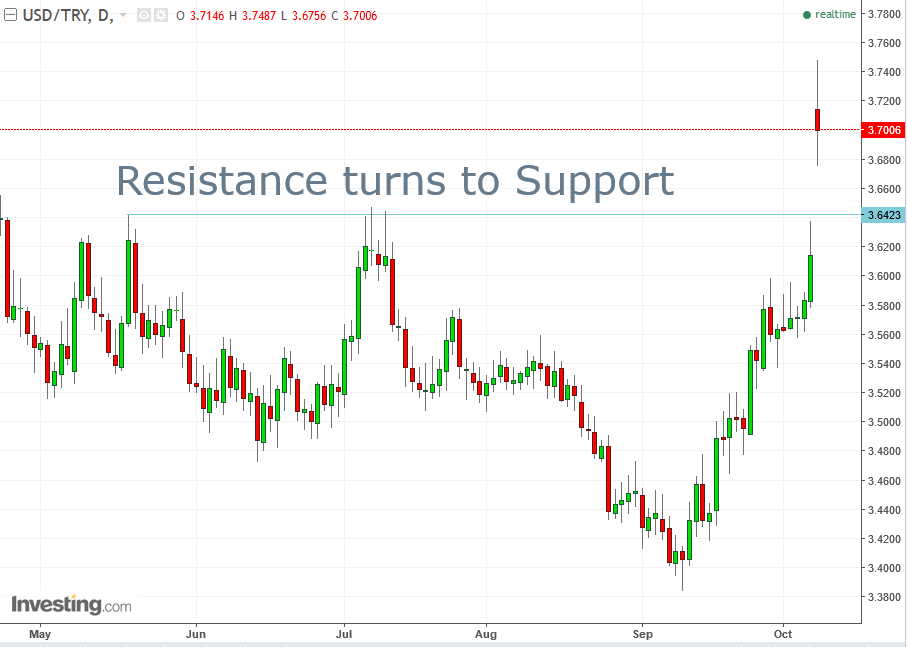by Pinchas Cohen
The current financial market environment appears to be more acutely sensitive to geopolitical scuffles, both big and small, than at any time since the end of the cold war. As well, the reintroduction of populism, via the UK's 2016 Brexit vote, the US presidential election result, and the two more recent eurozone events—the post election struggle in Germany to built a ruling coalition and the Catalonia freedom referendum that's been roiling Spanish politics—has been having a significant affect on markets, in particular currency markets.
Yet another political tussle is taking over today’s market narrative: the diplomatic fallout now driving a wedge between the United States and Turkey.
Tiff Takes Toll On Turkish Markets
It all started last Wednesday, with the arrest of a Turkish national who works at the US consulate in Istanbul, for alleged involvement with the July 2016 coup attempt against Turkish President Recep Tayyip Erdogan. In protest, the US yesterday halted visa services in Turkey. Hours later Turkey responded in kind.
Many observers believe Erodgan used the 2016 coup-attempt, which some believe was simply a ruse fomented by Erdogan himself, to acquire additional, dictatorial powers. Not only have this weekend's events drawn attention to a government already viewed unfavorably by Western democracies, the arrest underscores the direct link to last year’s major step backward for Turkish democracy.
Of course, Turkey is no match for the US, nor for other developed countries that oppose the Turkish strongman. But Erdogan's wish to be viewed as a powerful player by world powers is strong. Though the current crisis, which has also had a negative effect on Turkish stocks and yields, doesn't appear to be much more than a scuffle, events can always play out in surprising ways.
Bottom line: unless Ankara can repair its relationship with Washington, which would probably be rough on Erdogan’s ego, the Turkish lira is likely to suffer. The last time Erdogan caved was in mid-2016 when he apologized to Russia after downing one of its warplanes. But it took Erdogan more than six months to muster up that apology, so the current tiff could continue to percolate for some time.

From a technical perspective, the fallout has given the USDTRY a considerable boost, on a rare 2.75 percent rising gap and as much as a 3.7 percent rally to overcome a resistance level, since May, where sellers overcame buyers. Once a resistance is overcome it is expected to turn into a support, where everyone gets on board with the new trend and buys, at the same key level where sellers outgunned buyers.
Since then, the Turkish lira had pared losses to 2.2 percent, unable to hold its earlier advance, bringing losses down to 1.7 percent.
Trading Strategies
Conservative traders would wait on a long for a confirmation of the support-to-resistance psychological reversal, with a return to the 3.6400 level, followed by a higher close.
Moderate traders may wait on a long for a return to today’s 3.6756 low.
Aggressive traders may go long now, providing they can either afford a stop-loss beneath the 3.64 level—to where it may still correct before an advance—or the risk to their equity balance with the potential loss of the position.
